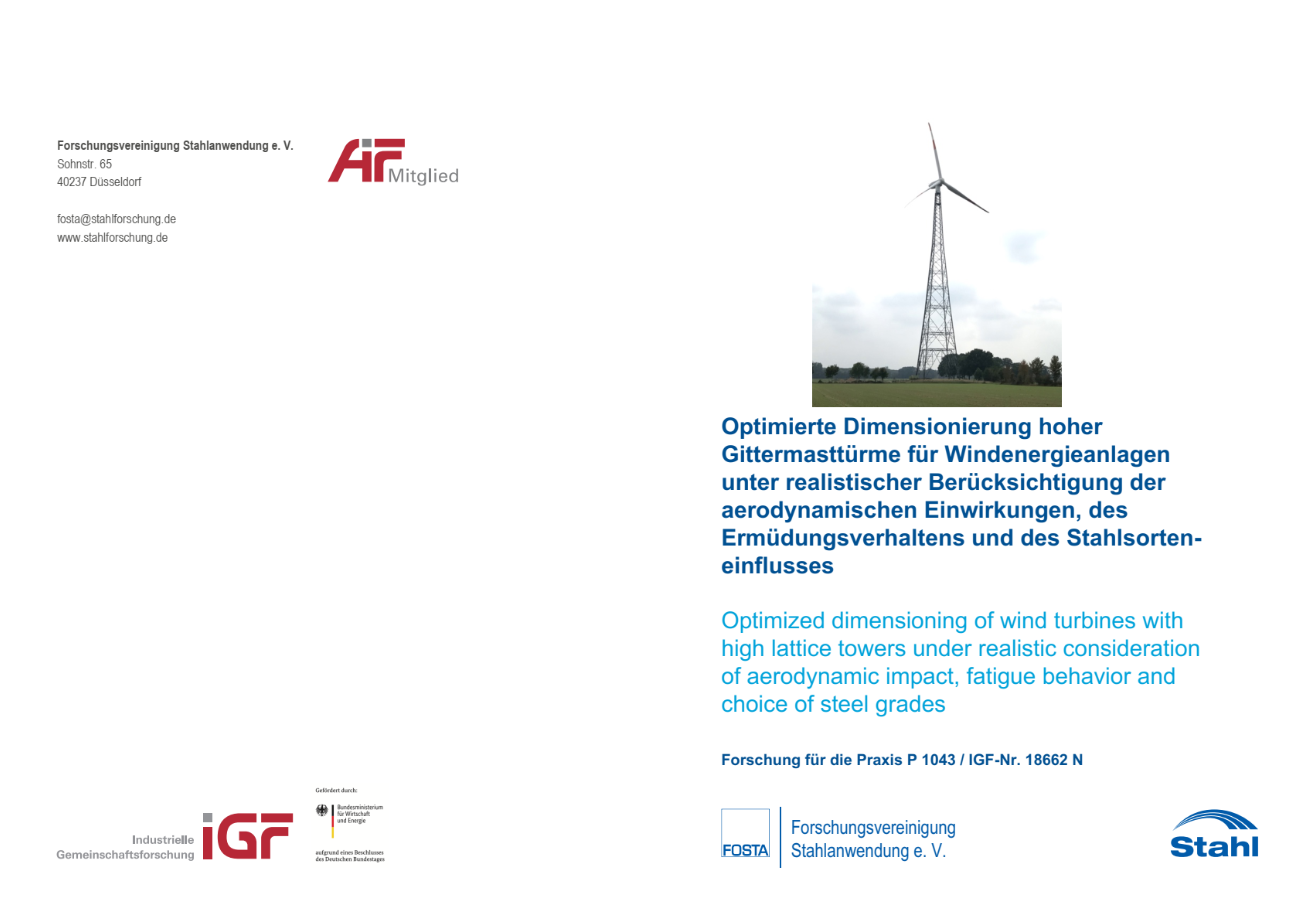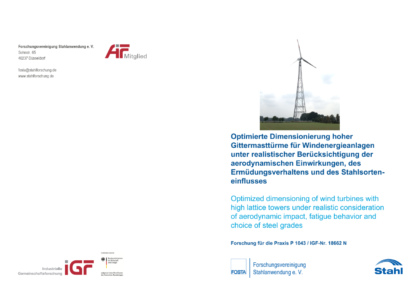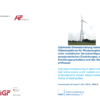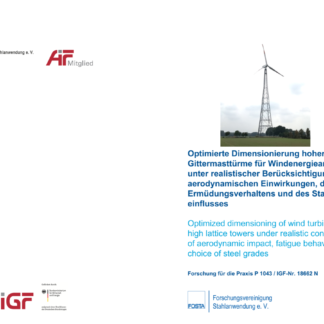Description
P 1043 – Optimized dimensioning of wind turbines with high lattice towers under realistic consideration of aerodynamic impact, fatigue behavior and choice of steel grades
This research project examined a number of fundamental aspects of the economics and technical superiority of tall lattice towers with and without wind turbines. The worked focused on both the aerodynamic properties of lattice towers and the structural aspects of the design. With regard to the latter, the topology (that is the geometric arrangement of the beam elements), the influence of the cross-sectional design and the steel grades, which were varied as part of an optimization process under costeffectiveness criteria, were particularly relevant.
For the calculations carried out, results of wind tunnel investigations were used for the modeling of the design wind loads, which were determined especially for the relevant low solidity ratios of high lattice towers. In addition, the wind load effect was realistically modeled with respect to the variability of wind speed and direction. As a result, probabilistic design was also possible, since the load data obtained for the first time had a sufficiently detailed statistical significance for the geometry, which in previous studies of lattice towers could only be rough estimated.
The design for the structure was made on a completely probabilistic basis. For this purpose, the relevant stochastic material properties were implemented in the calculation method. All necessary proofs were carried out based on the current Eurocode.
Particularly challenging for structural design of lattice towers is the load situation induced by the wind turbine. The highly dynamic loads must be determined by a valid load calculation and then transferred in a suitable form with regard to the structural response.
For this purpose, time-based calculation methods (multi-body simulation, time step calculation) are usually required. Such load calculations were calculated for the defined reference installation and the associated lattice tower using accepted calculation tools. Due to the high computational effort which is based on the time step calculation and the complexity of the structure, it was also examined what simplified spectral-based methods could be advantage. The result showed that this can only be used for preliminary design, which has already proved to be advantageous in the context of iterative optimization process.
Finally, using tools mentioned above, optimization calculations carried out to evaluate which tower and cross-sections and steel grades are most economically. It has been found that for high truss towers, higher-steel strength S460 are to be preferred compared to normal-strength steel S355 if the tower weight is used as an optimiality criterion. For lower tower heights, steel grade S460 is of less importance.
Published in:
January 2021
Authors:
Univ.‐Prof. Dr.‐Ing. M. Feldmann, Prof. Dr.‐Ing. F. Kemper, Dipl.‐Ing. M. Friehe, Prof. Dr.‐Ing. R. Schelenz, Dipl.‐Ing. A. Werkmeister




